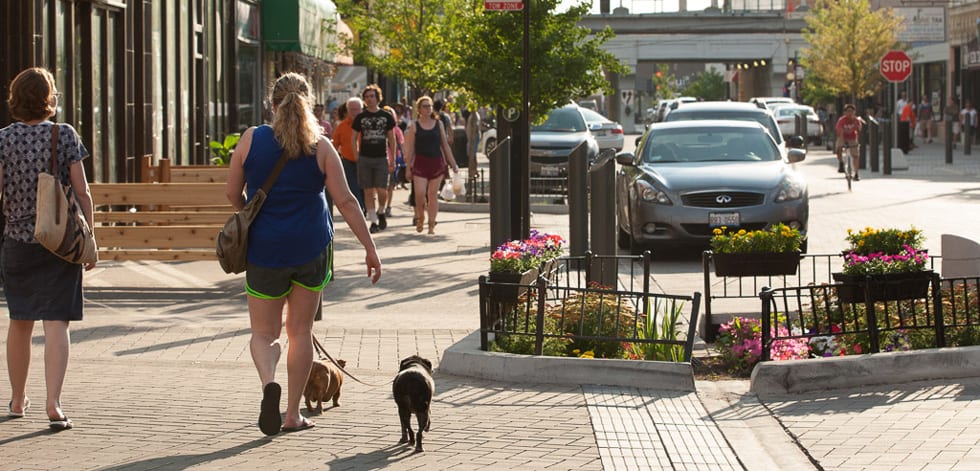
Why investing in your brand is more important than ever
There’s absolutely no question that branding is the king of the corporate world.
A thousand companies can offer the exact same products and services, yet the ones that survive and thrive are those that have not only established a strong brand foundation, but have strengthened it over time to meet their consumers’ evolving needs.
So, why shouldn’t public sector cities do the same? After all, they’re not just selling a commodity that enhances your life. They’re selling an opportunity to build a life.
Born with a brand
“Community branding isn’t new — we’ve been doing it forever,” said Keith Benjamin, community services director for the City of South Euclid. “However, cities are realizing that they need to update their brand identities to better reflect their evolution.”
In recent years, more civic institutions have refreshed their brand identities to enhance equity. They want to refresh antiquated logos, modernize core messages, create unique signage and hashtags, and revamp communications tools. Some people may question if they’ve been bitten by the branding bug — one that leaves them with a new logo and tagline before they move to the next shiny initiative. But, we think they have their sights set on something more important.
“Many small, historic cities are centers of commerce and activity, but they’ve been devastated by people and investments leaving for big, metropolitan areas,” said Eric Wobser, director of economic development of City of Sandusky. “They have create a better value proposition.”
Communities have wrapped branding efforts into long-term master plans and economic development strategies. Like their corporate counterparts, they’re competing against other cities, including those with big budgets and nationwide recognition, for residents, investors and visitors.
“If you think about it, cities are products,” Wobser adds. “People have the opportunity to choose where they invest, shop and buy homes. Branding helps you honestly look at yourself and determine why they should come to you.”
In other words, they have to own a clear vision for who they are today and where they’re headed to attract new audiences and investment.
“You can’t expect to grow by staying rooted in the past,” said Sean Hughes, economic development director at City of Delaware. “Externally, people saw us as an old community that lacked diversity and economic potential. Our brand became the nucleus, helping us shift perceptions and building a quality reputation that reflects our evolving population, schools, neighborhoods and business district.”
“You can’t expect to grow by staying rooted in the past…” -Sean Hughes, City of Delaware
Own your brand promise
Branding allows communities to define and own their position — who they are, what they do and how they’re different — in the marketplace so they can confidently seek new opportunities instead of passively reacting to them.
Most importantly, it helps them answer the question, “Why should people and businesses call this place ‘home’?
The answer has nothingto do with a new logo or tagline. It’s about their brand promise, or what kind of experience people can expect from them over and over again. And while firms like ours, Guide Studio, help to craft brand strategies and designs that help communities express their promise with authenticity, we don’t really “build” brands. They do – the communities themselves. Fortunately, the brand development process helps them identify and articulate that brand promise so that they can be smart about how they keep and communicate that promise. These “hows” may include programs, initiatives, communications, legislation, wayfinding, events, and more.
“Our brand is only successful when we back it up with action – programs, regulations, marketing efforts and more – that reflect our promise,” said Benjamin. “Our tagline, ‘Come Together and Thrive,’ doesn’t mean anything without initiatives like our sustainability programs, community gardens, LEED certified homes and stores, and non-discrimination ordinances.”
In other words, a civic brand has vast, long-term implications that go beyond a fresh logo. It’s a vehicle that helps to steer your economy, public policies, safety, business development and user experience forward.
Benjamin adds, “Now, our tagline is more than a tagline – it’s a motto that guides every single decision.”
“…civic brand has vast, long-term implications that go beyond a fresh logo.”
It takes a village
It’s important to keep in mind that communities can’t develop effective brands within silos. People, meaning residents, business owners, institutional leaders, and visitors, have to be part of the brand-building process. After all, they drive the experience forward. If they don’t believe in it, how can you expect anyone else to buy-in?
Brand stewardship drives growth faster than any financial incentives or tax breaks. Discounts only go so far in the corporate world, and the same goes for civic brands. Sure, you can throw a lot of money at people, but they need to trust that your brand experience is sustainable and worthy of their long-term commitment.
“Your brand is absolutely worth the investment, but it’s one part of an overall community development strategy,” said Benjamin. “You can’t just paint a pretty picture and expect people to come and be a part of it. Everyone has to work on it every single day.”
In isolation, a brand is nothing. But as part of a plan and commitment to drive a community forward, it is a powerful tool.
Talk to our team about developing a brand to support and enhance economic development.
Sign Up Fore More Insights
Get the newest information right in your inbox via our monthly newsletter, designed to inspire and inform community visionaries, public space advocates, and facility planners.